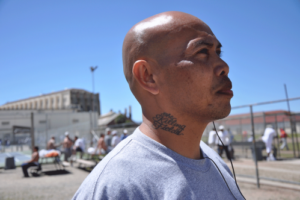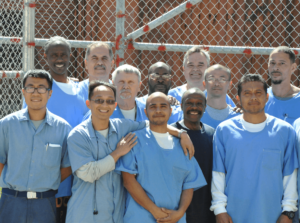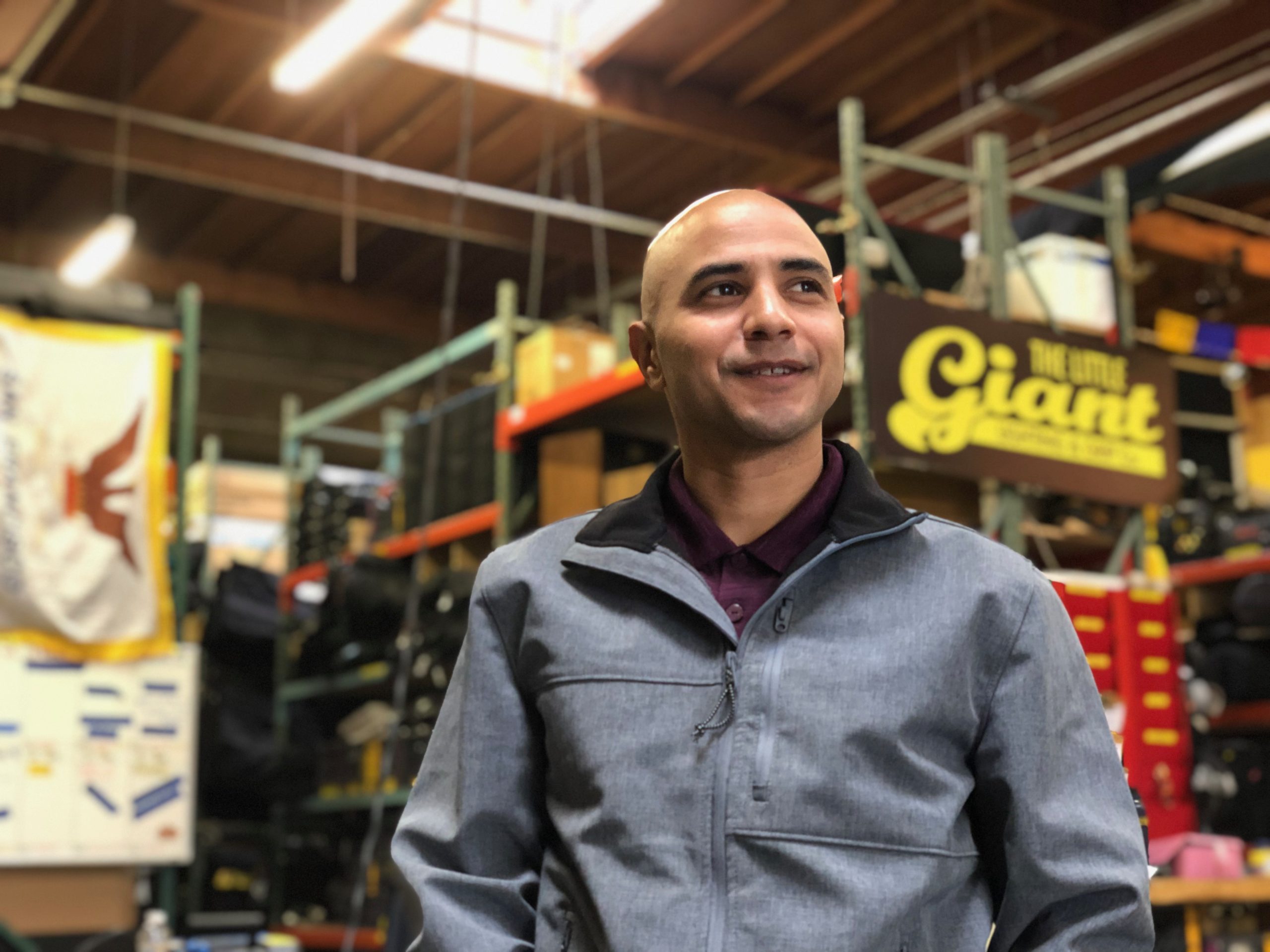Like any other Friday at lunchtime, La Santaneca de la Mission, a Salvadoran favorite, is packed. Eddie Herena flips his menu back and forth, deep in consideration, before ultimately settling on cheese and pork pupusas. The most mind-blowing thing about being outside, he says, is the concept of having choice in his life.
Herena walked out of San Quentin State Prison last October, after being incarcerated for 14 years. Before his arrest, he had gotten caught up in Norteño gang life in East San Jose. When he was 13, his older brother, also a Norteño, had been killed. Gang life made him feel him accepted. It was exciting, too. He loved the lifestyle — the drugs, the women, the violence. And at 5’2” and 125 lbs, “Little Eddie from the Block” felt protected in the gang. “Being small, I also had to prove myself,” he says. “That I could do just as much damage as the other guys, if not more.”
At 10pm on a Saturday night in 2005, Herena, then 21, had just left a friend’s house with his girlfriend and some other friends. The group pulled into a parking lot off of Story Road in San Jose. Herena was drunk and high, but he perked up when his girlfriend’s cousin, who was 14, got out of the car and attempted to leave with two young men who had arranged to pick her up. He wasn’t about to let her leave with strangers. He grabbed a pocket knife from his girlfriend’s purse, walked to the other car, and started fighting with one of the other men. Within moments, he had stabbed a 19-year-old man three times in the chest and left him dying in front of a Shakey’s Pizza Parlor. Herena and his friends fled back to the house where they had been partying. At 4am, the police arrested him.
He was sentenced to a 15 years-to-life term in prison. Within the first six months in county jail, he became a devoted Christian and by earning points for good behavior, he was able to serve his final eight years at San Quentin, widely known amongst people in prison as the best prison in California due to the volunteer-run programs that support inmate rehabilitation and re-entry.
While at San Quentin, Herena started delivering copies of San Quentin News (SQN) to the prison hospital. Founded in the 1920s, SQN published in fits and starts over the last century, but since 2008, has operated in earnest as one of the only inmate-run publications in the country. Professional journalists and journalism students offer guidance to its dozen-or-so staff, who write, design and publish the paper without internet access. To report on news outside of San Quentin’s walls, the reporters rely on volunteers who relay them information. The paper’s 30,000 monthly copies are circulated to all of California’s 36 prisons, and to individual inmate subscribers throughout the country.
When one of the SQN’s volunteer advisors handed him a Nikon D90 camera, Herena taught himself how to take photos by reading the camera’s manual whilst sitting on the top bunk bed in the 4-by-9 cell that he shared with another inmate. Soon enough, Eddie became the paper’s main photographer, covering stories about prison sports, events, and programs, and taking portraits of fellow inmates. Aside from giving him hands-on opportunities to develop his photography skills, SQN offered him and the rest of its staff the chance to network with industry professionals.

In the past 10 years, none of the 19 SQN staff members who have been released have returned to prison. By comparison, 65 percent of those released from California prisons return to prison within three years, according to a 2012 report by the California Department of Corrections and Rehabilitation. SQN staff have been able to leverage the skills that they honed on the inside to find solid jobs on the outside. The paper’s alumni are now working as journalists, lawyers, in public offices, and at nonprofit organizations.
“[SQN] is one of the few opportunities in prison that a person has to develop positive leadership skills in a collaborative, pro-social work environment that is demanding because making timelines is a must,” says Lt. Sam Robinson, the Public Information Officer at San Quentin. “For some of the men, it is the first time they are contributing positively to a greater cause and the community.”
On October 15, 2018, a 35-year-old Herena departed San Quentin’s East Gate with an envelope containing $200, a couple boxes of his belongings, and his parole conditions. Most memorable, he says, was the fact that he was wearing a dress shirt, black jeans and tennis shoes — street clothes that his mom had sent him for his release. “Once your clothes are different, you’re different,” he says.

Within just two weeks of his release, Herena’s photography skills, and SQN’s network helped him find a full-time job as a shop hand in San Francisco’s Mission district, at Little Giant Lighting and Grip, a lighting equipment company for filmmakers and photographers. While on the inside, Herena had met a Little Giant employee who taught lighting workshops to the staff in San Quentin’s multimedia newsroom.
With his pupusas long gone, Herena reflects on the choices that have brought him to this point in his life. “It took a horrible experience for me to wake up — I took someone’s life and ruined his family,” he says. “But I’m trying to make a positive difference. And I feel like my life is really becoming something.”
The San Francisco Foundation provides funding to San Quentin News through its equity grants program.


